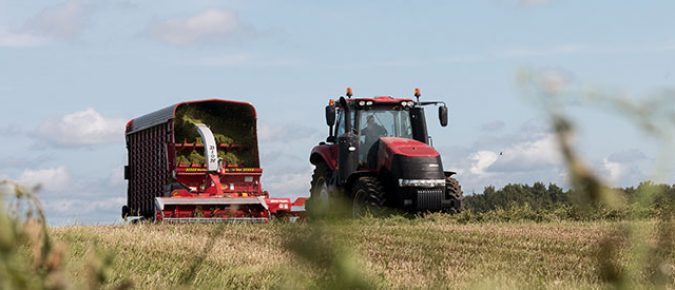Farmers experienced a number of challenges in 2020, including financial spikes and dips. Farmers have several tools available to assist with managing their tax liability, however some of these tools need to be taken advantage of prior to December 31, 2020.
Negotiating is important for the success of any business, but it is especially critical during lean times. It may seem like common sense, but many times people let their emotions get the best of them and ignore their basic instincts. It takes homework, discipline, and street smarts to successfully make a deal.
During the farm succession process it is common for the owner generation and the successor generation to discuss a transfer of assets. However, a conversation about the transfer of management – which is important to the success of the farm succession – is often overlooked.
Core values are the guiding principles that dictate a person’s behavior. Understanding a person’s core values will help you to understand why people do the things they do. When going through a farm succession it is important for the parties to have open conversations about the process. Knowing the other parties core values can help make these conversations more productive and enjoyable.
The monthly and annual spending plan worksheets located in the Cultivating your Farm’s Future workbook can be used to attribute expenses to the household and farm. In a farm succession, these worksheets can be used by both the owner and successor generation.
The monthly and annual spending plan worksheets located in the Cultivating your Farm’s Future workbook can be used to attribute expenses to the household and farm. In a farm succession, these worksheets can be used by both the owner and successor generation.
Jerry Apps shares the early role women had in the dairy industry and how that changed over the years along with some personal stories of women’s roles in agriculture during the Depression Years of the 1930s and WWII, drawing on his mother’s roles at that time.
Stress is a double-edged sword. A little stress can serve as a constructive motivator, galvanizing us to action. Too much stress, on the other hand, can damage our health compromise safety and sabotage personal relationships. With the arduous and sometimes volatile conditions we see in agriculture, the risk of too much stress is alarming.
Sound employment practices geared toward attracting, training, retaining, and rewarding employees must reflect a clear understanding of employee views and experiences. The farm culture represents “the way things get done around here,” and it can be positive or present a challenge for employees. The culture on a farm may not be obvious or visible, but it is there.
When I was a little boy, I was intrigued by trucks, tractors and machines like any farm kid. I understood what the gas pedal was in my mom’s car and my dad’s pickup. But it took me a while to understand exactly what the throttle did on the steering column of our John Deere 4020 and how it controlled fuel flow. Understanding stress is similar — and for our health and the well-being of our loved ones and relationships, learning where to find the levers to “throttle down” the chemicals that fuel high levels of stress is crucial.
Determining a rental rate is not an exact science. Local demand and supply conditions, anticipated market conditions, and long-standing working relationships can have bearing on rental rate negotiations. Learn what factors to consider when setting a rental rate.
It is critical that landlords and renters spend time addressing the terms of the rental agreement before finalizing the agreement to prevent problems over the duration of the contract. Maintaining positive working relationships between landlords and renters is vital for long-term success. Learn what to include in a fair and equitable farm land lease.
Rental rates and lease agreement questions often arise in the fall. Landowners or renters are looking for a lease agreement template that they can plug their values into. Learn what’s important to include in lease agreements and how to create a robust, authentic lease agreement.
We use agricultural chemicals for many different purposes around the farm and in the field. Every chemical has the potential to be harmful to humans, but each varies significantly in the risk they present to us. Learn more about the risks and potential effects of chemical exposure.
Part 2: Dermal Exposure to Chemicals
Exposure to your skin, or dermal exposure, is the most common way for chemicals to enter your body. Oral exposure most commonly occurs when you eat without first washing your hands or share beverage containers. Different chemicals will have different effects.
Part 3: Inhalation Exposure to Chemicals
Inhalation exposure (breathing in) is the most dangerous type of chemical exposure because vapors, gases, smoke, or dusts are absorbed rapidly into your bloodstream or cause injury to the the tissues of your lungs, and/or loss of consciousness.
In humans, ivermectin tablets are FDA-approved for treatment of some parasitic worms. Some topical formulations are FDA-approved for the treatment of external parasites; for example, headlice and skin conditions such as rosacea.
English | Spanish Cultura La cultura, ya sea de un individuo o de una organización, es un concepto importante, pero a menudo difícil de entender. Es intangible, lo que hace difícil encontrar ejemplos en la vida real. La mayoría de las personas se centran en lo que es visible: una persona diferente en relación con […]
Culture—whether of an individual or an organization—is an important but often challenging concept to grasp. Farm business culture relates to the values, goals, beliefs, and way things are done on the farm – communication, how work is accomplished, how achievements are celebrated.
Business succession planning just doesn’t happen. Producers must intentionally focus on the planning and work with a team of professionals. Here are ten steps and questions that farmers can do as they prepare for succession planning.

















